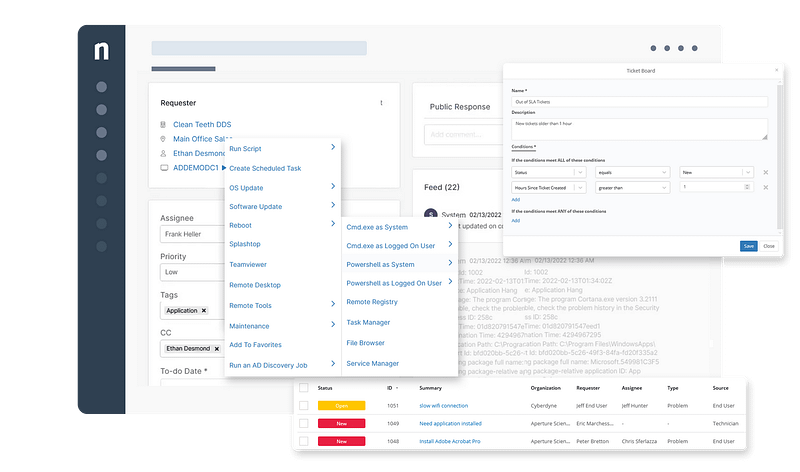Unleash Next-Level Enterprise IT Help Desk Capabilities with NinjaOne
Elevate your service delivery and expedite ticket resolution with NinjaOne’s advanced IT help desk tools. NinjaOne automates insights, streamlines workflows, and empowers IT teams for swift problem-solving and enhanced service outcomes.
